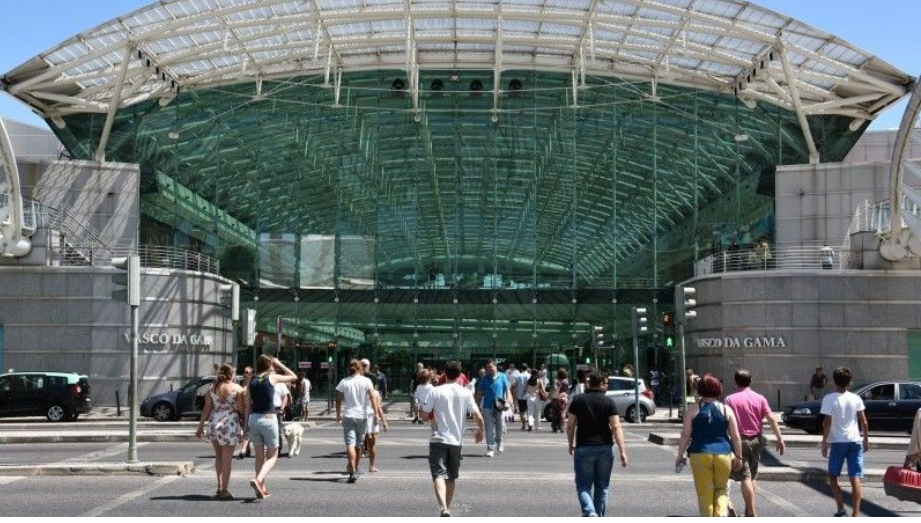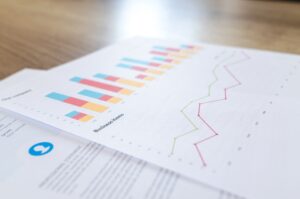Forbruget rammes usædvanlig hårdt under corona-krisen med et fald i forbruget i år på 5 pct. Det er dobbelt så meget som under finanskrisen, hedder det i en analyse fra ABN Amro. Men der er store variationer i forbrugssektoren, og forbrugsmønstret ændrer karakter.
Uddrag fra ABN Amro:
Consumers in the coronavirus era
- Intelligent lockdown pushes y-o-y consumption 13% lower
- Supermarkets and local speciality stores cashing in
- Businesses digitising sales and consumers ordering more online
- Difference between weekend and workday spending disappears
- Durable goods purchases brought forward
- Easter weekend tells the lockdown tale: consumption 22% down
- Second round effects depress economy in 2021
- All in all, consumption hit harder than in the financial crisis…
- … we foresee 5% y-o-y contraction for 2020
- Strong procyclical consumption patterns put drag on recovery after the expected recession in 2020
200421-The-consumer-during-corona.pdf (245 KB)
Unprecedented consumption shock
As described in our baseline scenario (see: Global Monthly) we expect gross domestic product (GDP) to contract by about 4%. The main catalyst of this recession is the sharp slump in private consumption, which represents about 45% of total gross domestic product (GDP). In this publication we look at the extent to which the coronavirus is impacting on consumption and the hardest-hit spending categories.[1]
Consumer spending is falling sharply, and that’s no surprise. Scores of shops and hospitality establishments have been obliged to close and tourist travel and daytripping is off the agenda. To measure the exact decline in consumer spending, we have used internal real-time transaction data and a CBS (Statistics Netherlands) dataset [2] to estimate the direct impact of the coronavirus on spending. Our assumption is that the intelligent lockdown will last two months (from 12 March to 12 May) before being phased out in steps. Due to the two-month lockdown, consumption will drop 4.75% y-o-y in 2020, with the step-by-step lifting of the measures shaving a further 0.25% off. In this scenario, therefore, consumption will shrink at an unprecedented rate of about 5% y-o-y. For comparison, the decline at the low point of the financial crisis in 2009 was about 2%.

Easter weekend tells lockdown tale: consumption 22% down
Easter weekend[3], usually a time for day trips, eating out and family gatherings, fell right in the middle of the lockdown period. That is clearly reflected in the figures. This year round, consumption over the Easter weekend was 22% lower than last year. The biggest decline occurred in the following spending categories: health (-80%), other goods
(-90%) and home, garden and interior (-60%). The fall in the health category is remarkable, given that precisely this category enjoyed a relatively strong increase in spending during the lockdown period. Evidently, consumers spent less on personal care because they were staying at home over the Easter weekend. Another category that witnessed a severe decrease was “other goods”, with department stores particularly hard hit compared to last year. In the run-up to Easter, department stores usually do a roaring trade in gift items and confectionery. This year, however, most department stores were closed, so this revenue totally evaporated, causing a sharp drop in “other goods”

The intelligent lockdown is sinking into the consumer mindset
Our data show that consumer spending has declined by an average of some 13% y-o-y since the government unveiled its measures on 12 March. This average omits the ‘panic-buying’ day of 13 March. Several interesting trends emerge from the consumer spending data.

- Supermarkets and local speciality stores are cashing in
When the crisis first erupted, consumers spent much more on food and drink, but growth in total spending on food has flattened in recent weeks. That said, spending on daily groceries will remain structurally higher as long as hospitality establishments are shut and people work mainly from home. In addition, consumers are spending more in speciality food stores. Enforced home-based working probably leaves people with more time to shop at these stores.
- From offline to online
We see a clear shift from offline to online: products and services that consumers used to buy physically are now partly being purchased online. In fact, this trend has accelerated over the past weeks – probably because retailers and consumers who were formerly less active online are now both resorting to digital platforms. In the past weeks online orders placed with restaurants doubled compared to 2019. This increase, however, in no way makes up for the drop (-74%) in spending in traditional hospitality establishments. The market for home-delivered meals is much smaller than the total out-of-home market. The meal delivery market is worth an estimated EUR 1.7 billion, while the out-of-home market accounts for EUR 19 billion.
- Difference between weekend and workday spending disappears
There is a marked decline in weekend consumption compared to 2019. Average consumption in the weekends of 21 March, 28 March and 4 April was 30% lower than in the comparable weekends last year. In the lockdown period, there is almost no difference between workdays and weekends. The main reason is that spending in bars and restaurants tends to be concentrated in the weekend. Now that many of these establishments are closed, the number of transactions has obviously dwindled to a fraction of the former total. Moreover, the fact that many people in the Netherlands are working from home means that typical weekend shopping, such as at speciality and DIY stores, is also being spread out over the week. In short, the traditional spending pattern with weekend peaks is flattening out into a more even pattern across the entire week.
- Durable goods purchases brought forward
Durable or semi-durable goods (lifespan of 1 year or more) account for an estimated 20% of all consumer spending. Consumers have clearly brought these purchases forward.
The spike in home, garden and interior purchases is particularly striking, with DIY centres, home stores and garden centres generating 25% more revenue on average in the week following 12 March. But this was followed by a sharp drop: in the past three Sundays spending on home and garden supplies averaged 40% less than on normal Sundays. The intelligent lockdown has severely curtailed people’s outdoor activities, leaving more time for some home DIY. It is not inconceivable that in the first week after the announcement of the intelligent lockdown people decided to stock up on these goods in case the situation escalated into an all-out lockdown. Electronics sales (mainly online) also rose sharply (50%) in the week after the lockdown was announced, but have slowly fallen back again since then. These purchases were partly related to enforced home working and would otherwise not have been made. But the purchase of other types of electronics, such as TVs and kitchen appliances, were probably brought forward.
The durable nature of most of these consumption goods means that these will now not take place later in the year. A strong revival in the purchase of durable consumption goods in the second half of 2020 is therefore unlikely. By contrast, non-durable spending (bars and restaurants, but also services such as hairdressers) is likely to rebound sharply once the lockdown is lifted.

Consumption in Netherlands strongly procyclical…
In times of recession, the average Dutch consumer reins in his spending much more than consumers in neighbouring countries. For that reason, economic growth here is more volatile[4] than in most other countries. One reason why Dutch consumers respond so strongly to economic ups and downs is that our financial buffers are not readily available in the form of cash. On average, Dutch households have substantial illiquid funds[5] (mainly in home and pension) and, against this, a high mortgage debt. A study of the CPB Netherlands Bureau for Economic Policy Analysis shows, for instance, that household debt in the Netherlands is about twice higher than in Germany and Belgium but that Dutch pension savings are four times higher. Dutch households hold an average of 30% of their capital in liquid assets, whereas the percentage for Belgian households is around 75%. Any income shock – due to e.g. unemployment or fewer assignments for self-employed people – immediately translates into lower consumption for Dutch households. Added to this, wealth shocks can have a negative impact on consumer spending. The property slump during the financial crisis in 2009[6] meant that consumers had less home equity to finance consumption. The same effect, of course, also applies in reverse: DNB calculated that the house price recovery since 2013 has given private consumption a strong impulse.[7] These procyclical factors are a boon in economic high times, but a bane in a downturn.
Post-lockdown recovery will be uphill…
Our expectation is that the social distancing society will leave a long imprint on the Dutch economy. The leisure and hospitality sectors will be particularly hard hit, as their business model is particularly at odds with social distancing. These two categories jointly account for some 8% of consumer spending. Next, second-round effects will inevitably occur due to the income and wealth losses described above. And another important factor is the uncertainty, which is causing households to postpone major purchases, such as a new home or car. In view of the extremely procyclical nature of the Dutch economy, the recovery after the expected recession in 2020 will be an uphill exercise. We therefore expect y-o-y consumption to rise again in 2020 but not to its former level. For 2021 we foresee an increase in consumption of 4.5%, leaving total consumer spending at year-end 2021 still short of the level reached at year-end 2019.

[1] The coronavirus is a new phenomenon for economists. As most official consumption data appear with a time lag of weeks and sometimes months, the direct impact of the spread of the virus on the Dutch economy is hard to estimate at this early stage. That’s why we have developed real-time indicators to measure consumption based on transaction data. The data consist of physical debit card transactions and online payments (iDEAL). Each day the payment systems of banks process millions of transactions; based on these transactions, we can calculate consumption in aggregate terms and broken down by service and product groups. That way, we can give our customers better insight into the state of the Dutch economy and help policymakers make the right choices based on quantitative analyses.



